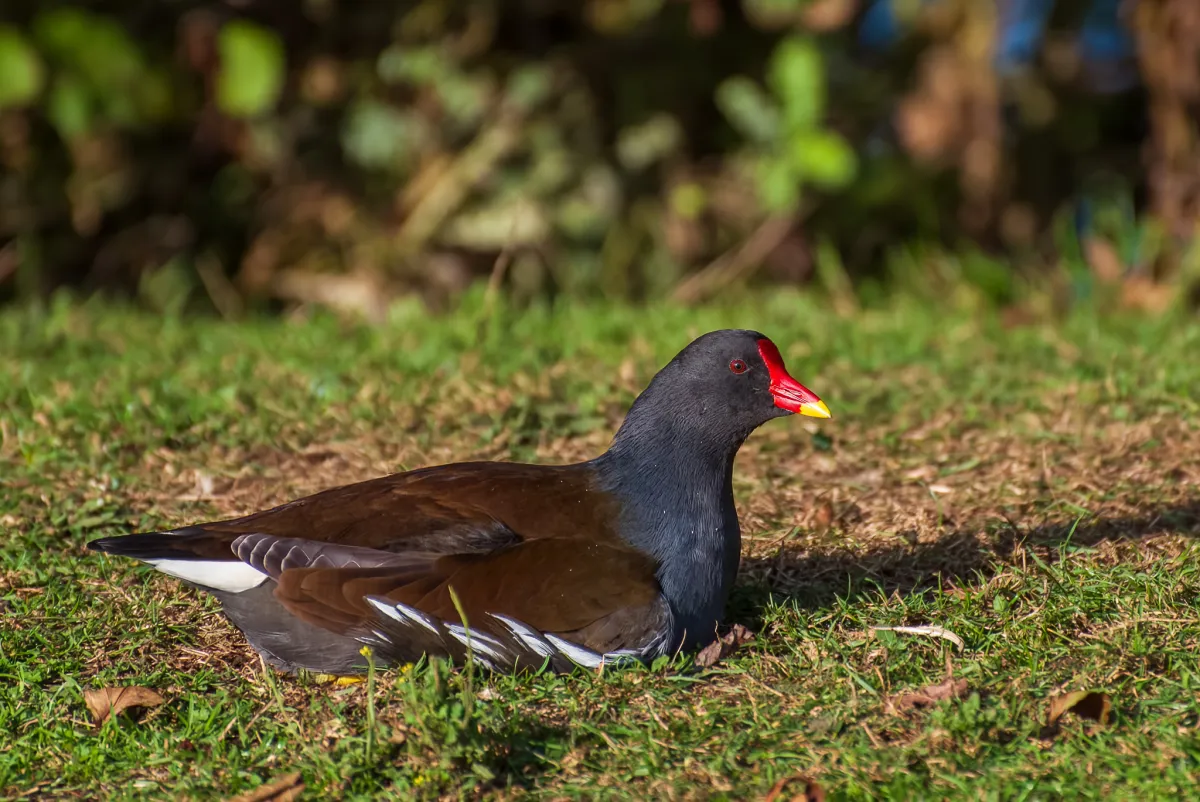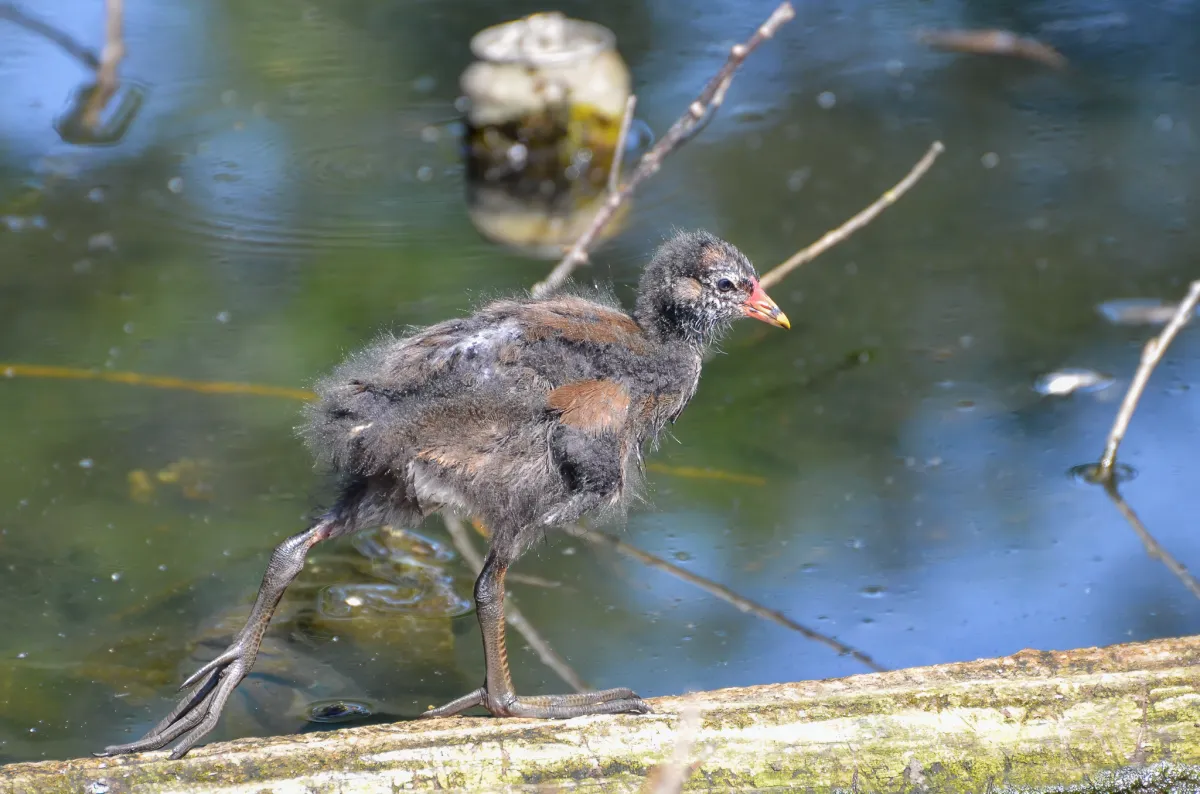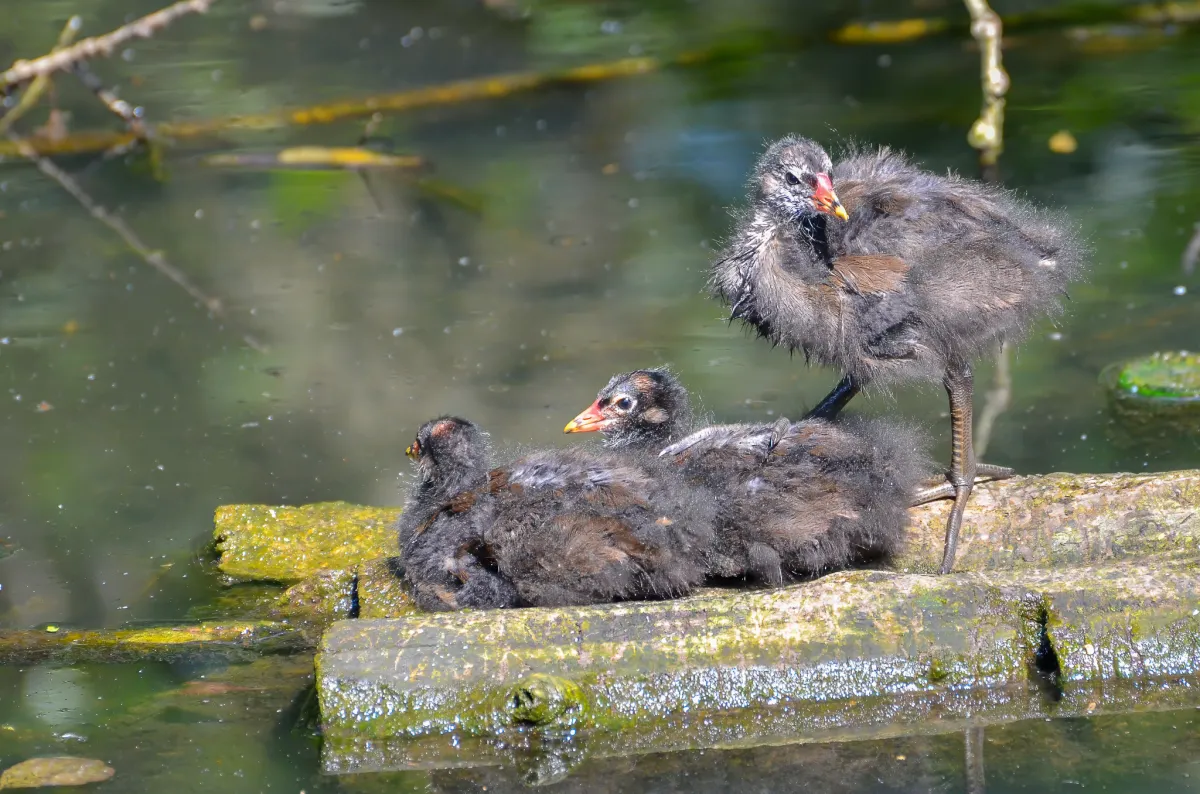Physical Characteristics
The Common Moorhen, Gallinula chloropus, sometimes affectionately referred to as the “swamp chicken,” is a medium-sized waterbird characterized by its distinctive appearance. With its dark plumage, charcoal-grey body, and eye-catching red frontal shield, the moorhen’s visage is quite unique. Its long, sturdy legs sport distinctive yellowish-green toes that allow it to navigate through its watery habitat with ease. The moorhen’s beak features a red base that complements its overall vibrant appearance.

Habitat and Distribution
This water-loving bird is a master of the wetlands, making its home in a variety of aquatic environments. From ponds and lakes to marshes and slow-moving rivers, the Common Moorhen’s adaptability shines through. Their distribution spans across the globe, found in Europe, Asia, Africa, and the Americas, where they often thrive in both freshwater and brackish habitats.
Social Behaviour
The Common Moorhen is a social and communal bird. Often seen foraging and frolicking in groups, these birds maintain strong connections with their fellow moorhens. Their distinctive and melodious calls contribute to their vibrant community dynamics, as they communicate with a series of grunts, clucks, and other vocalizations.
Feeding Habits
The moorhen’s diet is as diverse as its habitat. With an omnivorous appetite, it dines on a wide array of food sources including aquatic vegetation, algae, insects, small fish, and crustaceans. Their ability to forage both on land and in the water makes them well-suited to their wetland homes.
Nesting and Reproduction
Moorhens are attentive parents, constructing nests amidst the reeds and vegetation near the water’s edge. Their nests are often a platform of twigs and plant matter, creating a safe haven for their clutch of eggs. Once hatched, the young chicks are a sight to behold, with fluffy black down and already displaying a sense of curiosity and independence.


Ecological Importance
The Common Moorhen plays a crucial role in wetland ecosystems. By consuming various aquatic organisms, they help regulate populations and maintain a balanced food chain. Additionally, their nesting habits contribute to the health of the wetland, creating nesting sites and providing shelter for other species as well.